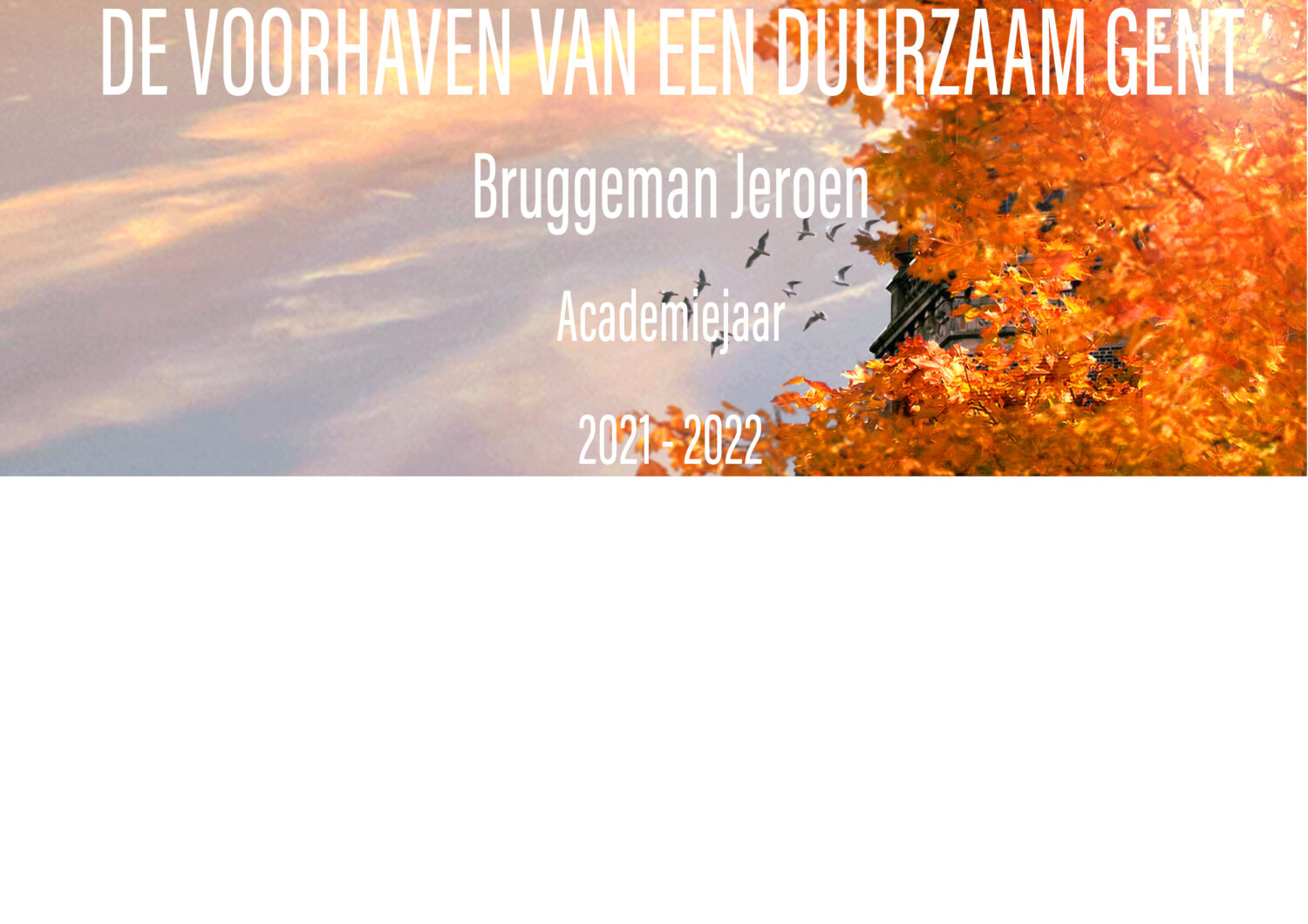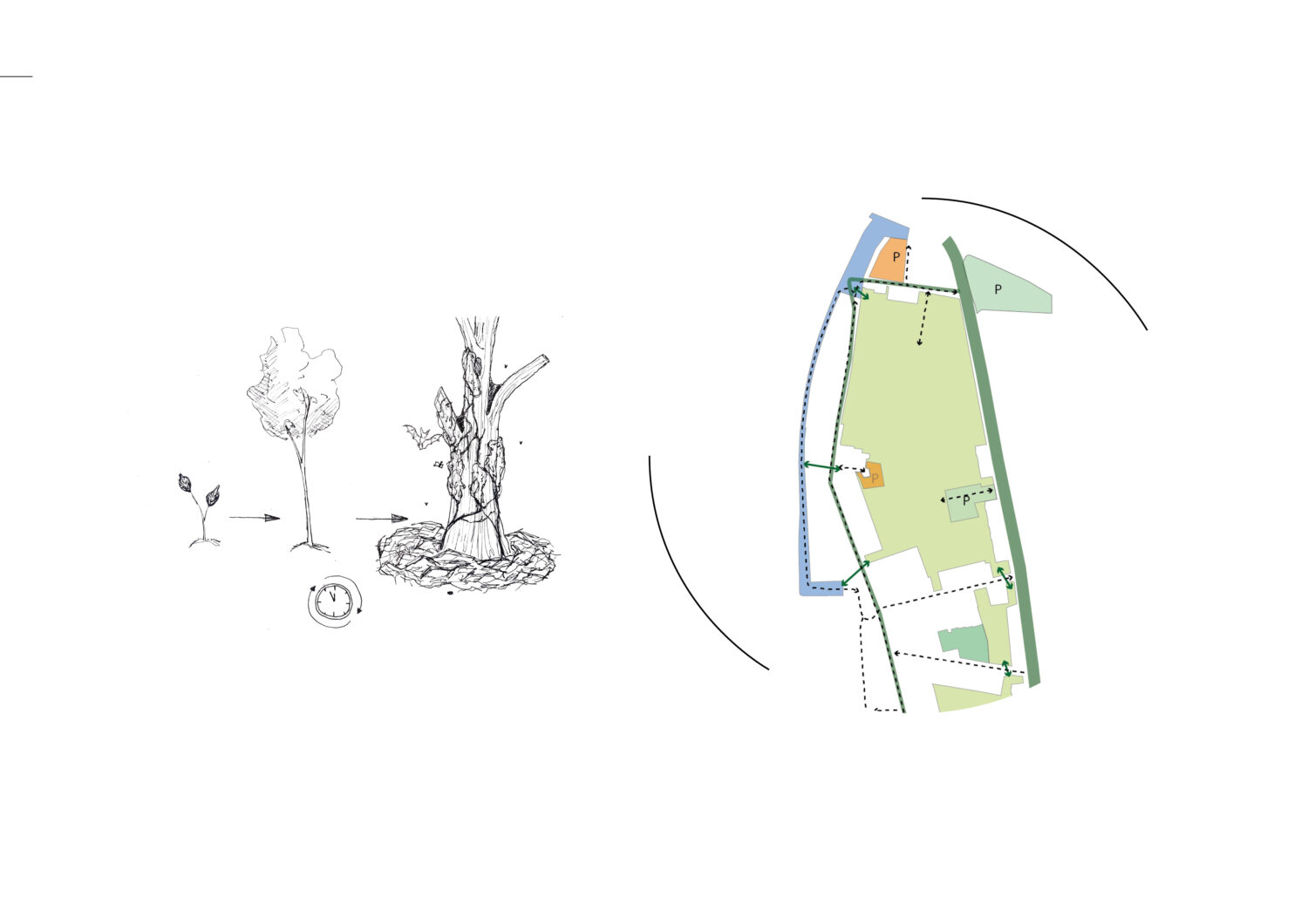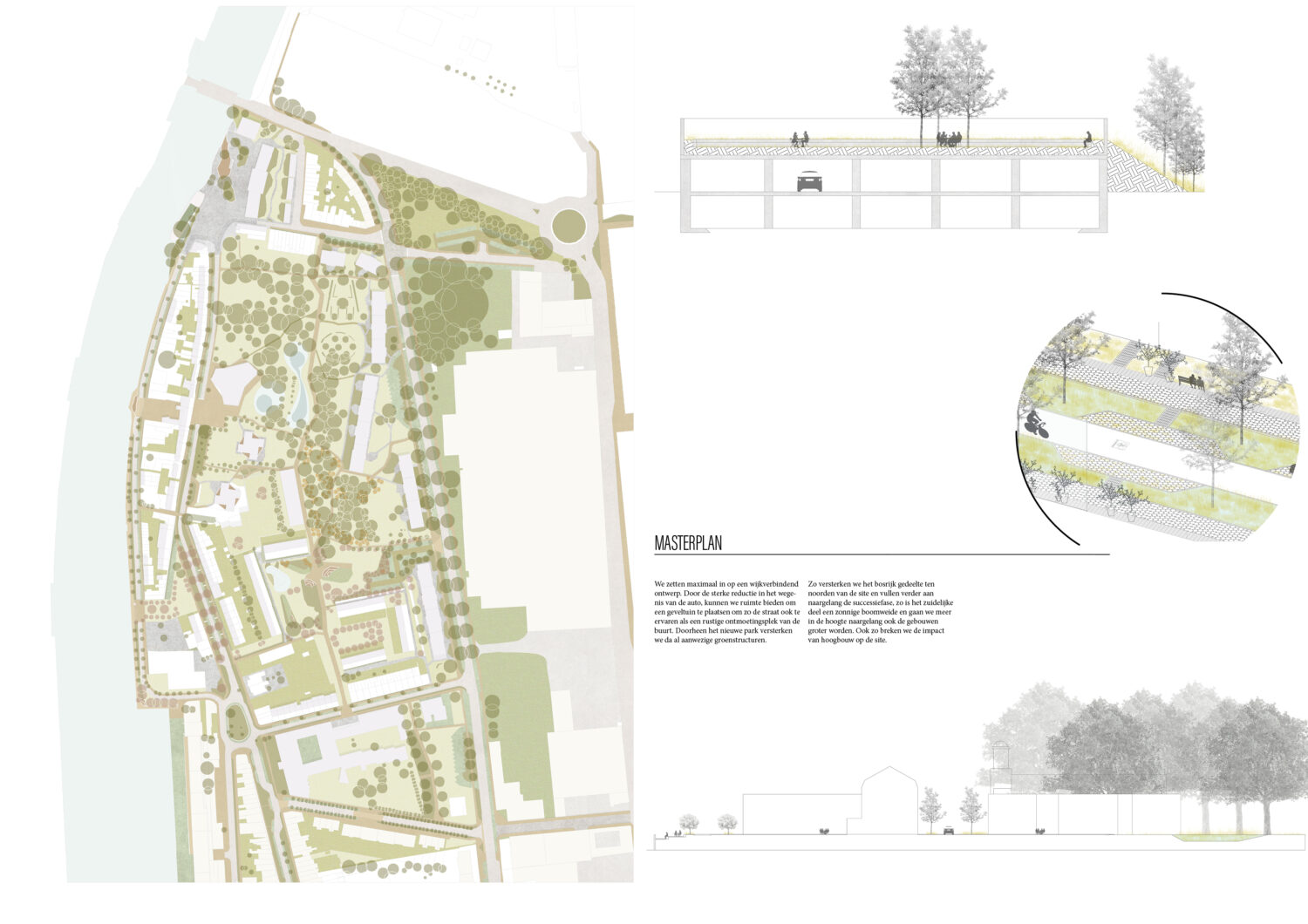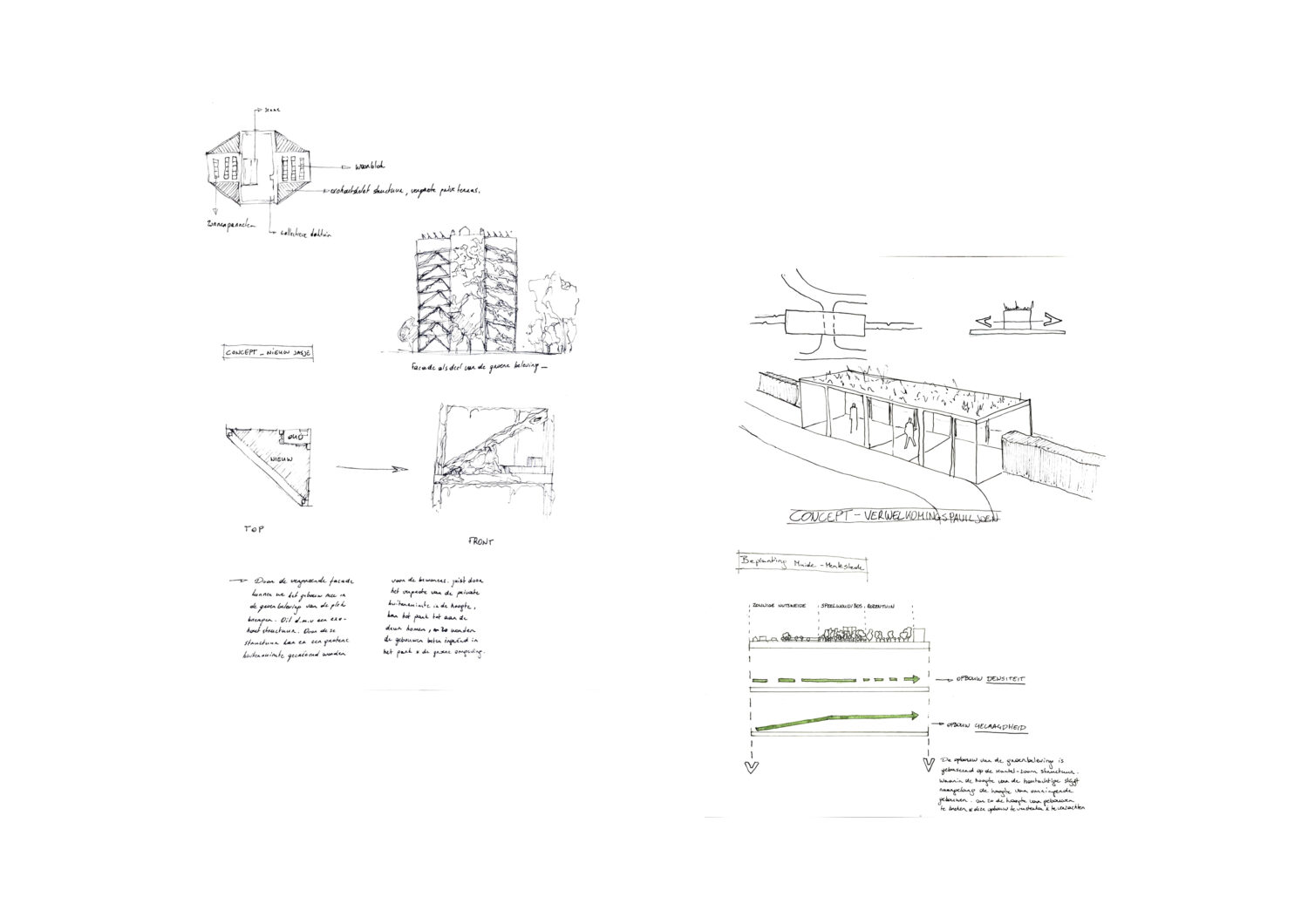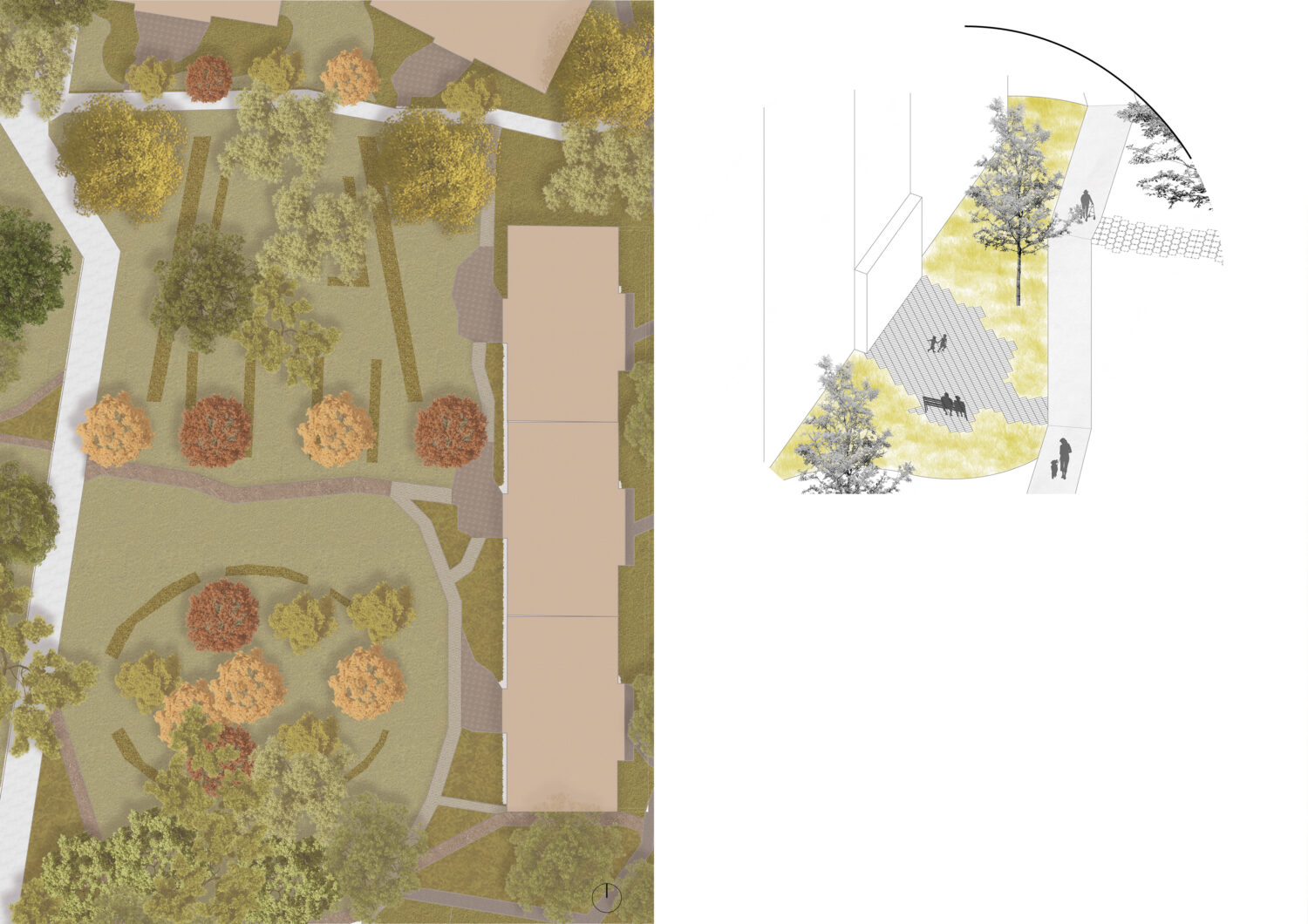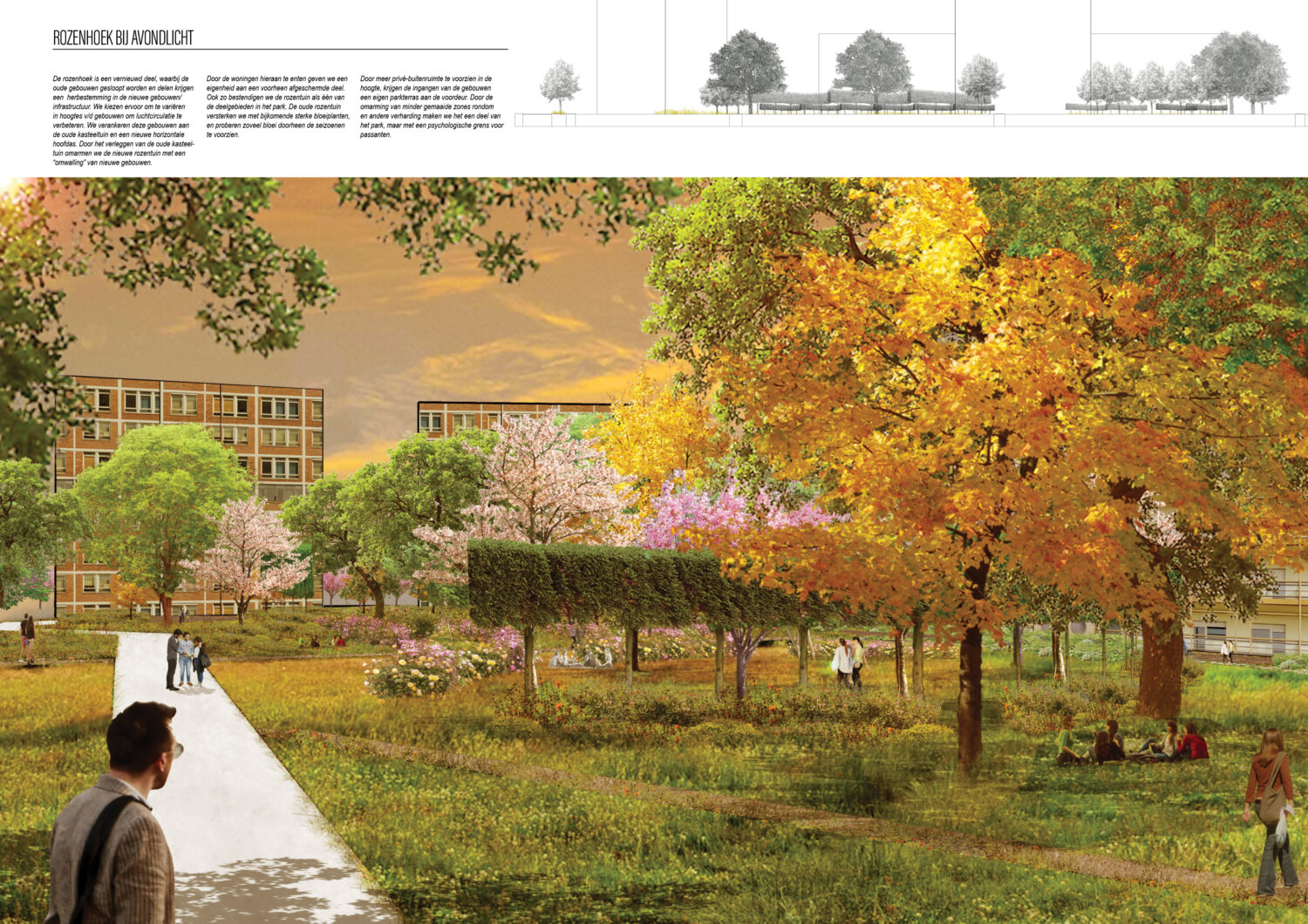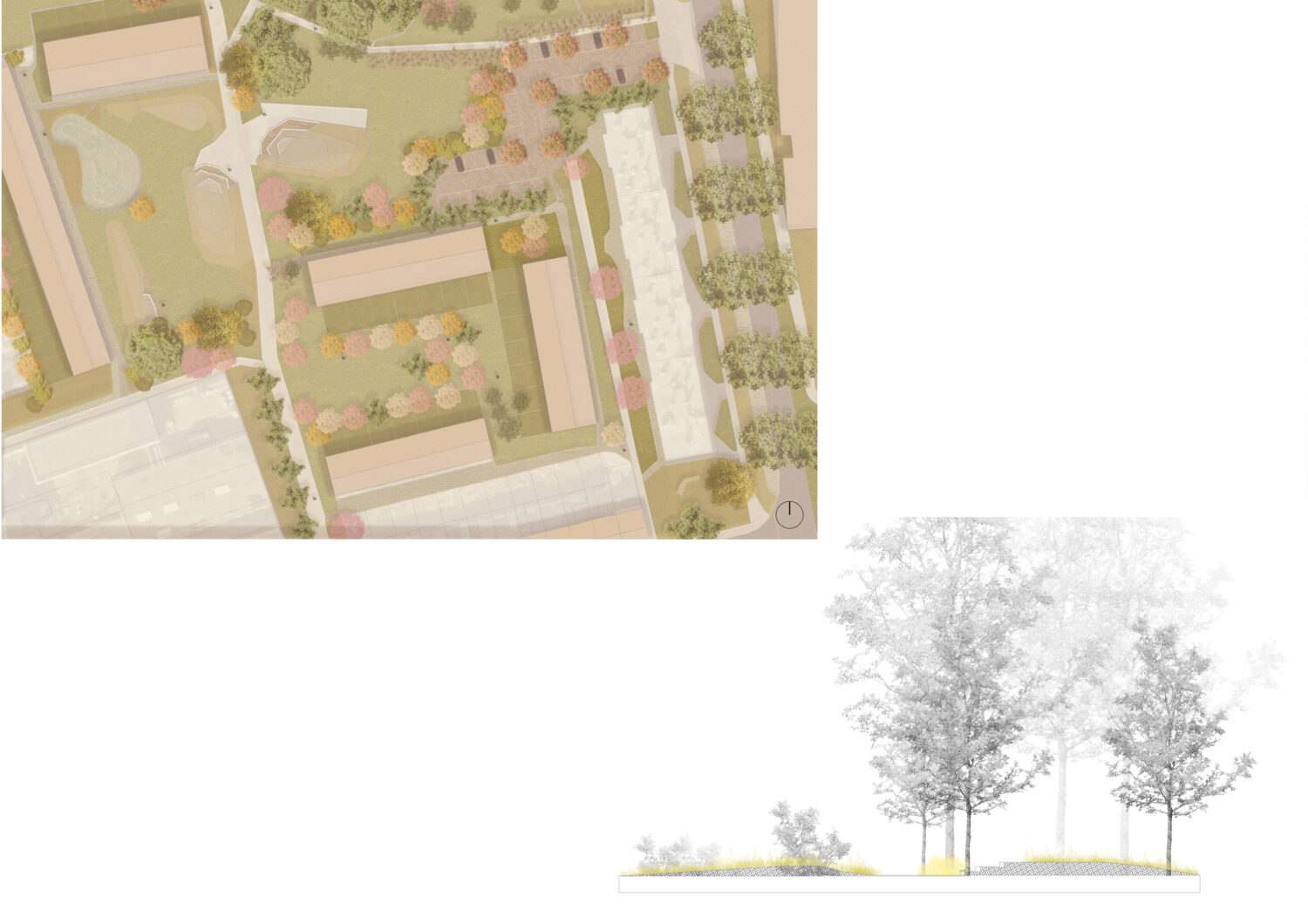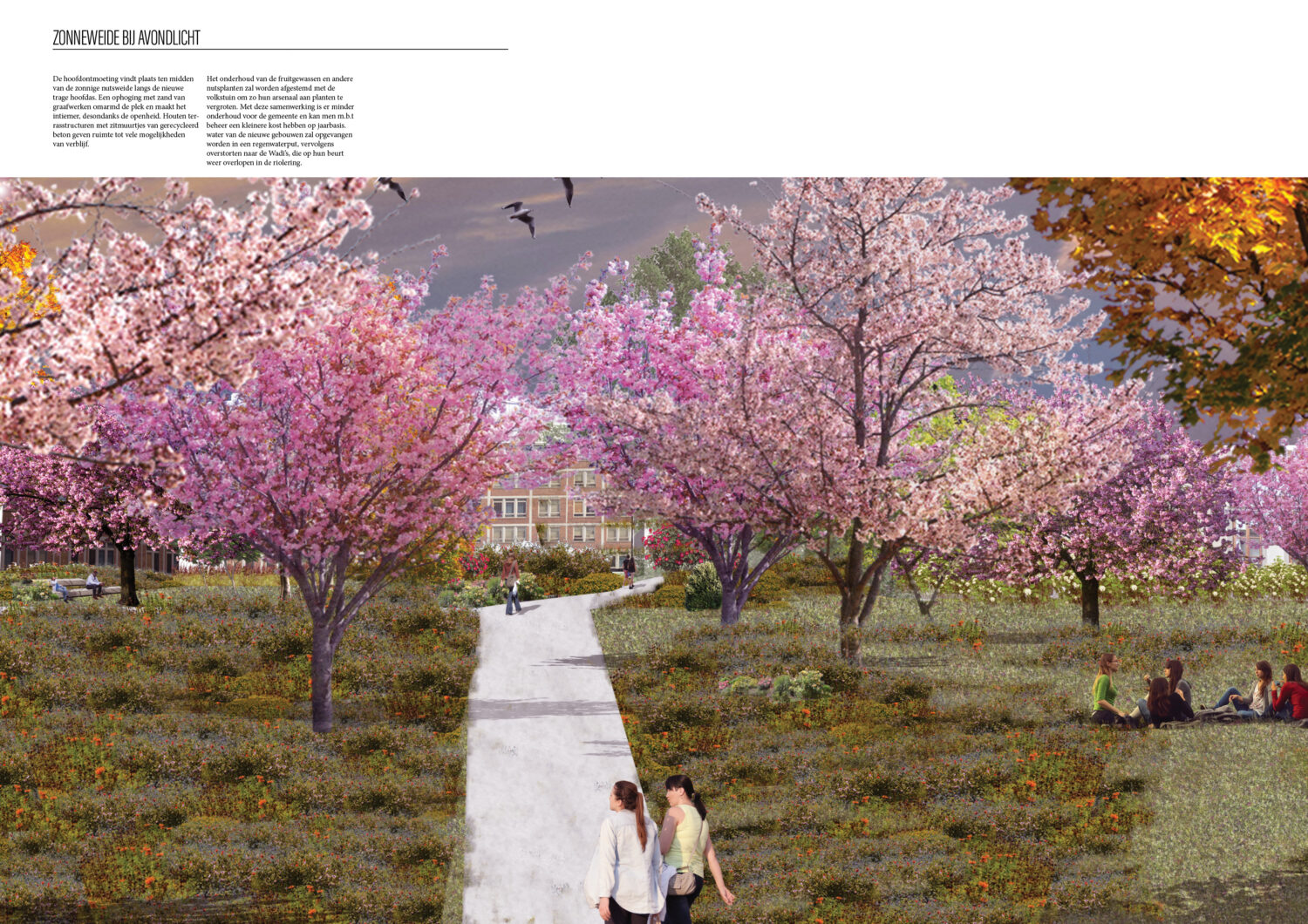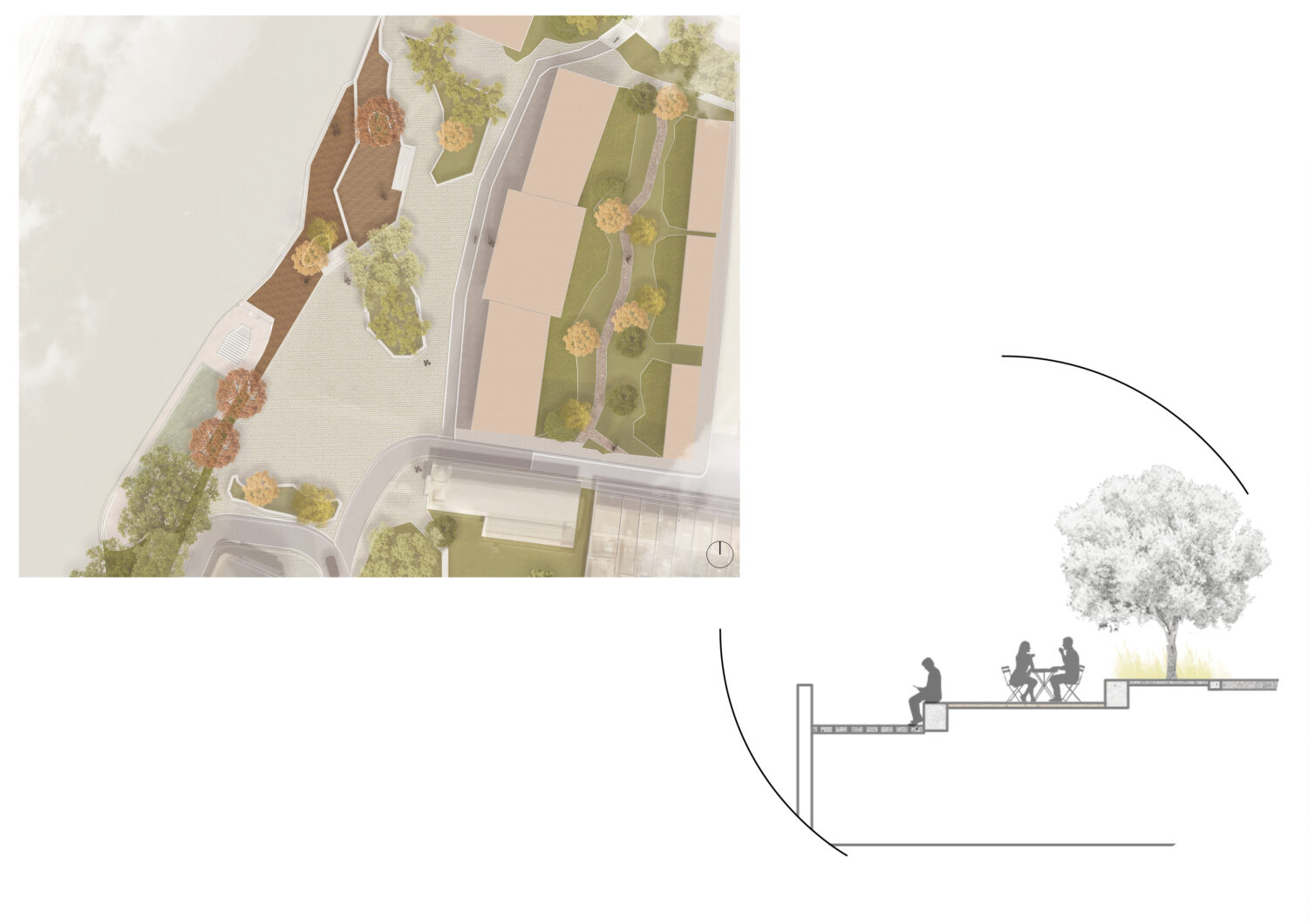Jeroen Bruggeman, The outport of a sustainable Ghent
Foré Pieter
Lierman Sally
Meirlaen Ann
Vanhaeren Kobe
Vande Maele Joke
https://issuu.com/jeroenbruggemanlta
https://www.linkedin.com/in/jeroen-bruggeman-b86661144
https://www.instagram.com/_jeroen_bruggeman_
Muide-Meulestede,
de noordelijke stadswijk van grootschalig Gent. De plek waar oudsher de Gentse voorhaven en haven ontstond. Een plek waar Meerse, leiemondingen en kleinschalige nijverheid het landschap bepaalde. Vandaag wordt ze bepaald door de 19e eeuwse stadsuitbreiding, een menselijk landschap. De wijk kent een slecht verschaald wegenis voor koning auto. Waarin wijk, haven en stad elkaar moeilijk kunnen bereiken binnenin de toekomstgerichte en huidige wensen.
Desondanks zijn er potentiële plekken die versnipperd van elkaar als een soort niemandsland fungeren. In dit ontwerp wil ik een antwoord bieden op de grootschalige en wijk gebonden verbindingen. Waarin huidig groen wordt versterkt, maar ook sterker verbonden wordt met elkaar. Dit door middel van een sterke maximale ontharding. Alsook een duidelijke hiërarchie in het wegenis te herintroduceren. Een plek waar ontmoeting centraal staat zodanig dat bewoners terug verbinding kunnen krijgen tot elkaar- en de stad.
Door middel van duurzame ontwikkelingspijlers zal getracht worden de toekomstige stadsontwikkeling zo circulair en klimaat robuust mogelijk te houden. Waar via deze pijlers: natuur, mens, water, bouwen, energie, economie, voedsel etc. een plek krijgt in een homogene klimaatwijk.
Zo is deze historisch belangrijke plek ook bestendigd in de tijd als de non-en fictieve voorhaven van een duurzaam Gent.
Muide-Meulestede,
the northern city district of greater Ghent. The place where Ghent’s outer harbour and port originated. A place where Meerse, Leie estuaries and small-scale industry defined the landscape. Today, it is determined by the 19th century urban expansion, a human landscape. The district has a poorly scaled king car route. In which district, port and city have difficulty reaching each other within the future and current wishes.
Nevertheless, there are potential places that are fragmented from each other like a kind of no man’s land. In this design, I want to offer an answer to the large-scale and district-related connections. In which current greenery is strengthened, but also more strongly connected to each other. This by means of maximum softening. As well as reintroducing a clear hierarchy in the road network. A place where meeting each other is central so that residents can reconnect with each other and with the city.
Through sustainable development pillars, the future urban development will try to be as circular and climate robust as possible. Through these pillars nature, people, water, building, energy, economy, food etc. will be given a place in a homogeneous climate district.
In this way, this historically important place is also perpetuated in time as the non- and fictitious outport of a sustainable Ghent.
